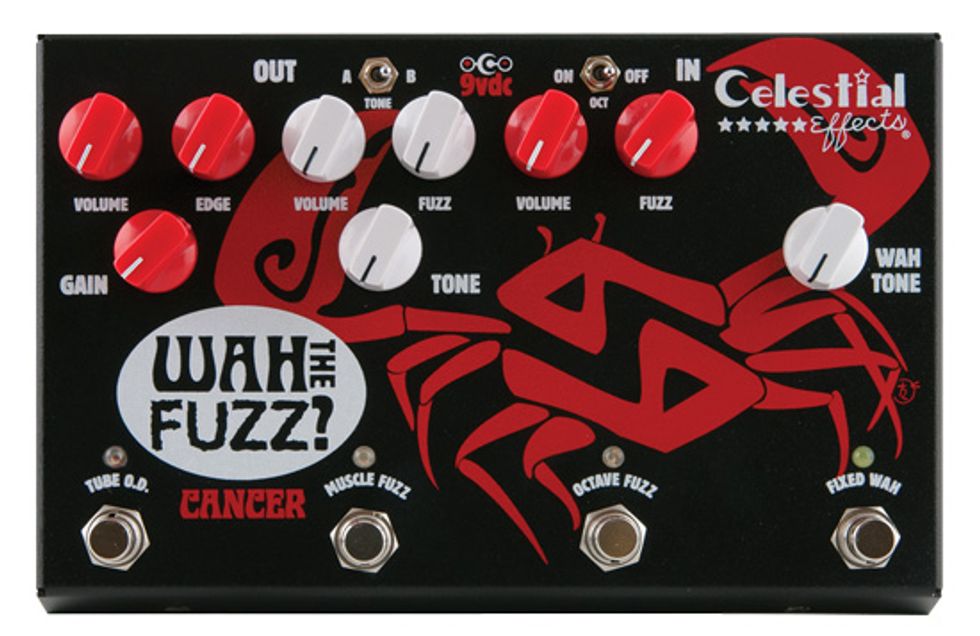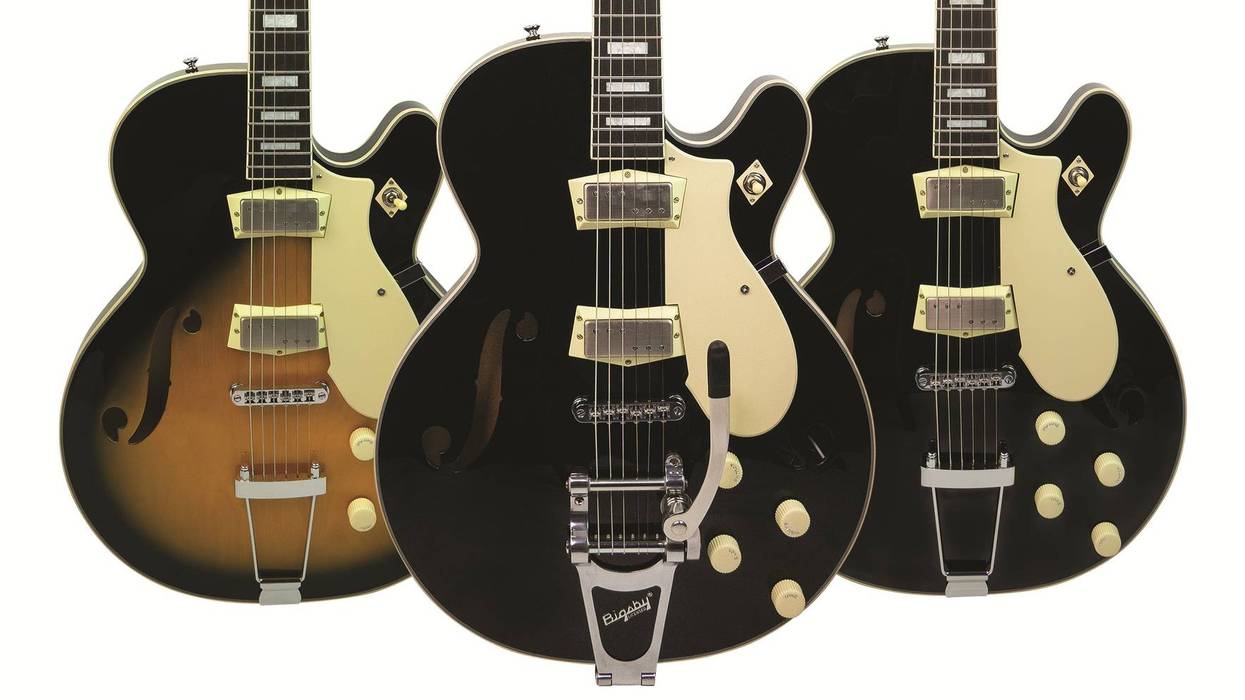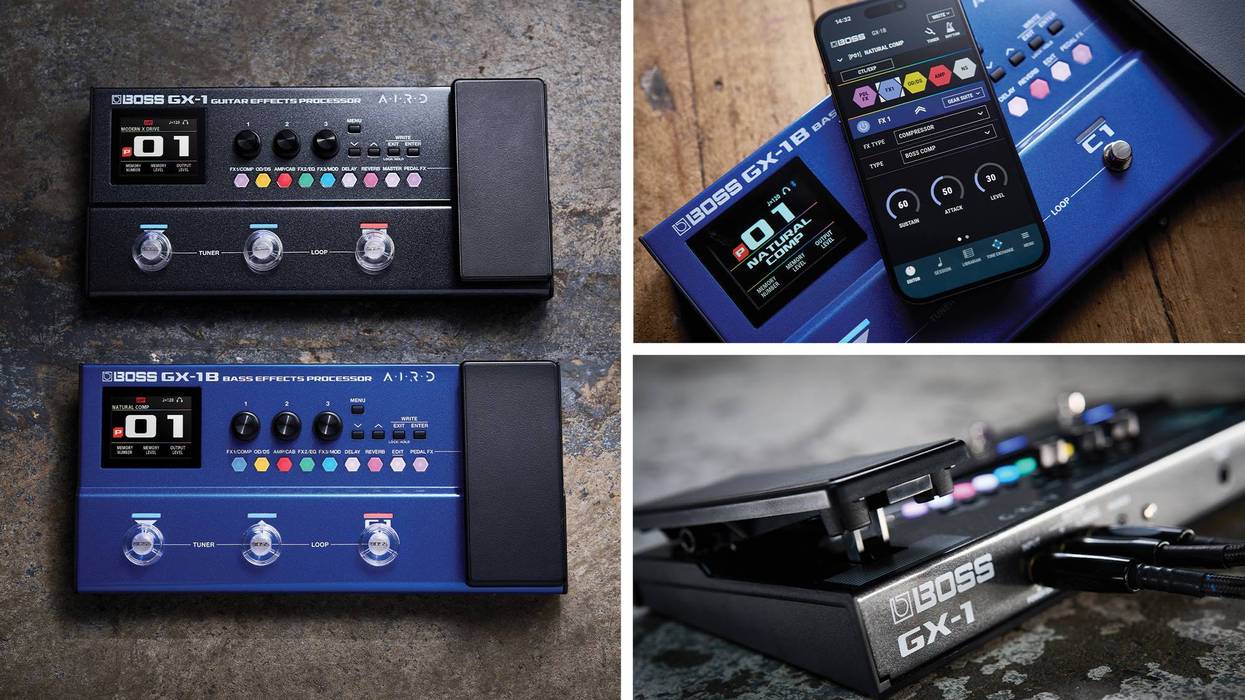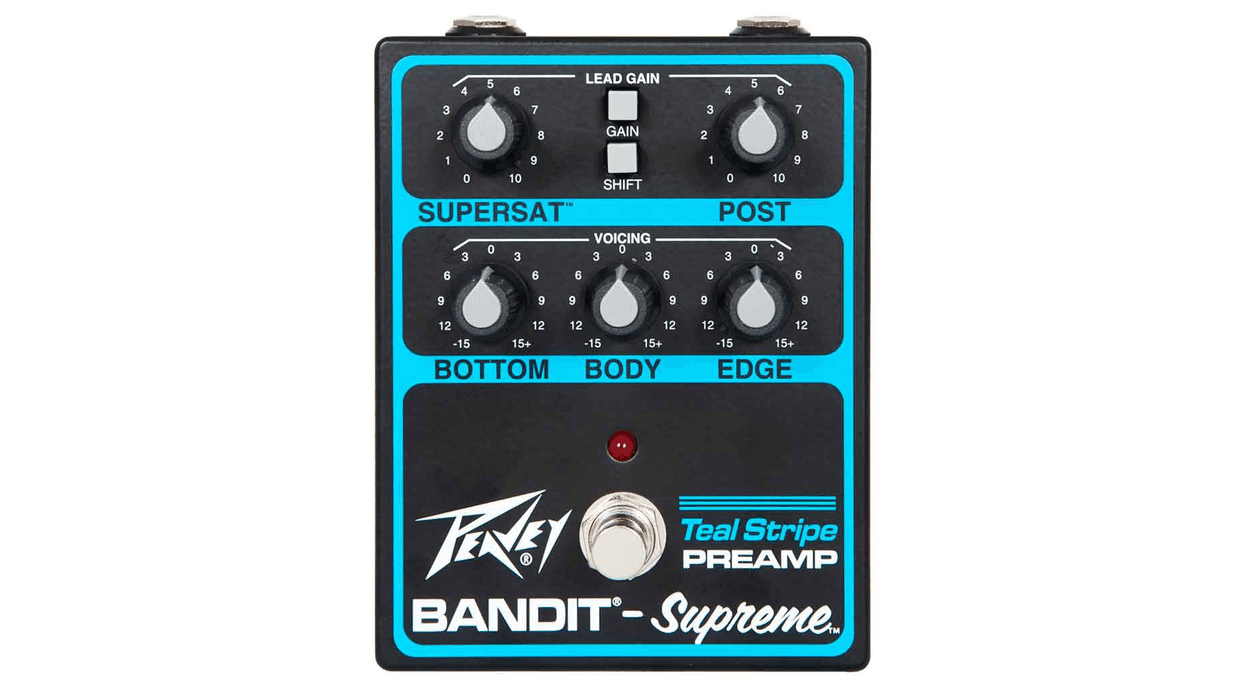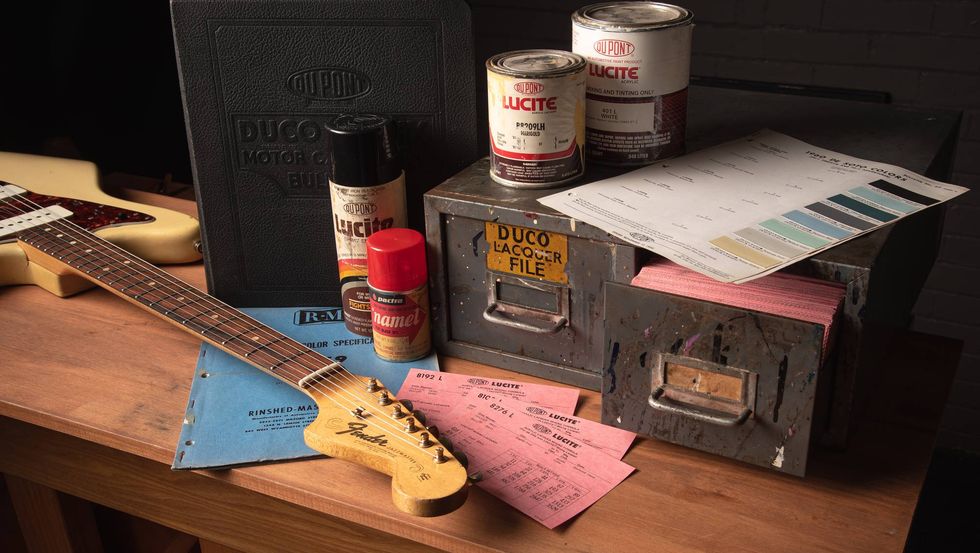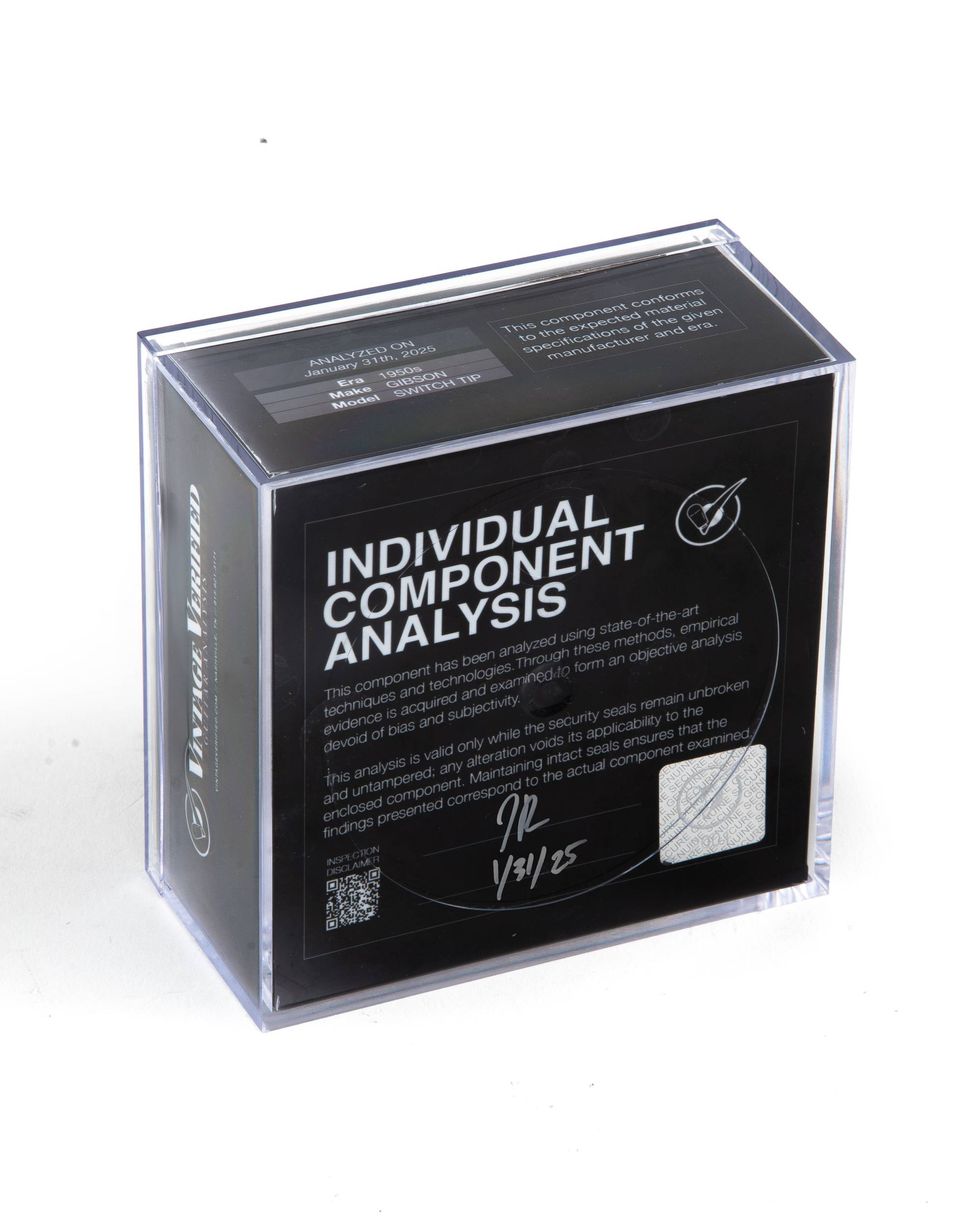I was watching Pink Floyd’s 1972 Live at Pompeii recently, and David Gilmour—long known for his skill with effects—was using a Fuzz Face, a Vox wah, a DeArmond volume pedal, and a Binson Echorec. That’s it. And he was just slaying it.
It got me wondering: At what point did guitarists decide we needed one box for a little edge, another for crunch rhythm, one more for leads, a silicon fuzz for when things get wild, and a germanium fuzz for those old-school tones? Given how obsessed we now are about having a pedal for everything, how did our rock-god forefathers get along with so little?
Celestial Effects’ latest pedal, the Cancer Wah the Fuzz?, may not solve pedalboard sprawl or make players any less interested in possessing every effect on Earth. But by consolidating four top-quality analog effects in a single unit, it’s at once simple, flexible, and extremely powerful, and it delivers an impressive combination of functional and far-out sounds.
Inspired Consolidation
Fundamentally, the Wah the Fuzz? combines
tube overdrive, muscle fuzz, octave fuzz, and
fixed wah in a way that provides a nice combination
of familiarity and esoteric tone options.
The layout is smart and functional—considering there are essentially six effect modes activated by dedicated footswitches and two toggle switches—and things don’t feel at all cluttered, even though the housing is relatively compact. By removing the bottom panel, which is held in place by six flathead screws, you access four additional trim pots for the fixed wah (gain, mids, input impedance, and width-of-sweep or Q control) and the 12AX7 tube that drives the OD.
Thoughtfully, the LEDs are four different colors, which makes it easy to see which effect is on. It’s pretty hard to mistake the overdrive from the paint-peeling sounds of the octave fuzz at full throttle, but in a challenging live-monitoring situation, telling the two fuzzes apart could be a problem, so I really appreciate features like this.
The WTF? is a good-looking box, too. The knobs alternate between white and red, from section to section, the enclosure is bombproof, and the paint and art don’t seem prone to scratches or nicks.
Many Legs of the Crab
The first effect in Wah the Fuzz?’s signal
path is the fixed wah. I’m surprised by
how few fixed-wah effects there are on the
market today, because it’s such a cool effect.
You know the sound—it’s one made popular
by famous players like Mick Ronson and
Michael Schenker, as well as lesser-known
greats like Kurt Heasley of the indie band
Lilys (one of my all-time favorite guitarists).
Sure, anyone with a wah can sweep the filter until they find the sweet spot and leave it there, but that can be precarious to say the least. And wouldn’t it be nice to have a set-and-forget version of the effect that takes you straight to “Queen Bitch” by simply stomping on a switch?
This is the pedal’s secret weapon. Combined with the other distortions, the fixed wah can either mildly accentuate the mids or impart a more extreme sonic stamp. My favorite use was kicking it in right when my guitar was about to feed back, which made it sing instead. (And boy, did it sing!) Being able to adjust the Q control on the fly might be nice—and something like a MXR-style rubber knob that you can nudge with your foot would be a smart addition.
Just downstream from the wah fuzz resides the octave fuzz. Foxx, Roger Mayer, and MXR have all made legendary variations of this effect—and all are notoriously finicky. Octave fuzzes tend to hate low notes, they don’t always work well with bridge pickups, and they glitch and gate out. In short, they can be a handful.
The Celestial tends to sound richer and more focused, however. The basic sound here is in the Octavia camp, but the addition of a mini toggle allows you to switch the octave on or off, essentially making it two different specialty fuzzes. Horn-like effects are possible, as are ring modulator tones, and it’s impressive how subtly these effects can be employed simply by varying the intensity.
The muscle fuzz is next in line. This is my favorite fuzz sound in the unit, by far. A normal/thick toggle lets you choose between two styles of fuzz (A and B). The first is a more classic sound in the vein of a Big Muff, the other is heavier, doomier, and in step with more modern sounds. It’s a versatile fuzz, and it’s pretty easy to go from fizzy to buzz saw to sludgy with a quick twist of the tone knob and flick of the normal/thick switch. And it’s fantastic when combined with the fixed wah. Quite honestly, it’s one of the best fuzzes I’ve ever heard.
Ratings
Pros:
Covers a lot of distortion needs with some bonuses.
The fixed wah genuinely opens up new possibilities. Lots of
sonic choice, yet not overwhelming.
Cons:
Costs as much as four individual stomps, so no bulkbuy
value. Octave fuzz not quite as strong as regular fuzz.
Tones:
Ease of Use:
Build:
Value:
Street:
$469
Celestial Effects
celestialeffects.com
The tube OD, the last in the chain, uses an actual JJ Tesla 12AX7. I’m always a little skeptical of tube overdrives housed in a pedal like this, and it’s reasonable to wonder if a 9V wall wart delivers enough power to properly drive the tube. And if you’re looking for true amp-style overdrive, the tube in the WTF? won’t really get you all the way there. That said, it sounds great. The gain and volume controls are pretty self-explanatory, but there is a third knob for edge. When dimed, this adds a very nice sizzle. Turning the edge counter-clockwise gets you a softer, somewhat squishy sound and response. The only notable omission is a tone control, which is puzzling, given that there’s enough room on the front panel for one.
To mimic a shared backline situation, I used the overdrive with three different amps and, of course, got three very different results. Typically, an overdrive pedal should function as a leveler for guitarists who don’t have the luxury of using their own amp, and a tone control is a big part of that. I did love the way it sounded in front of an AC30, though, and it paired nicely with my old 12-watt Fender Musicmaster Bass amp. There’s lots of extra volume available, too, so it makes a nice and very functional boost.
The Verdict
I know as much about Zodiac signs such as
Cancer as I do about Zoroastrianism, which
is to say nothing, but I do know quality
when I see it. This is a major consideration
when you’re getting ready to drop big bucks
on a stompbox, and the five-year warranty
suggests Celestial is confident in their work.
With the Cancer Wah the Fuzz?, Celestial is likely dealing with a fairly narrow market, since it’s targeted at the player who’s willing to spend significant cash to simplify their pedal rig while committing to an octave fuzz and fixed wah—specialty effects for most. On the other hand, it will be a bonanza for open-minded players looking to explore new tonal places and sonic spaces by combining fuzz and overdrive. The selection of effects makes great sense, and it would make one hell of a secret weapon in the studio.


